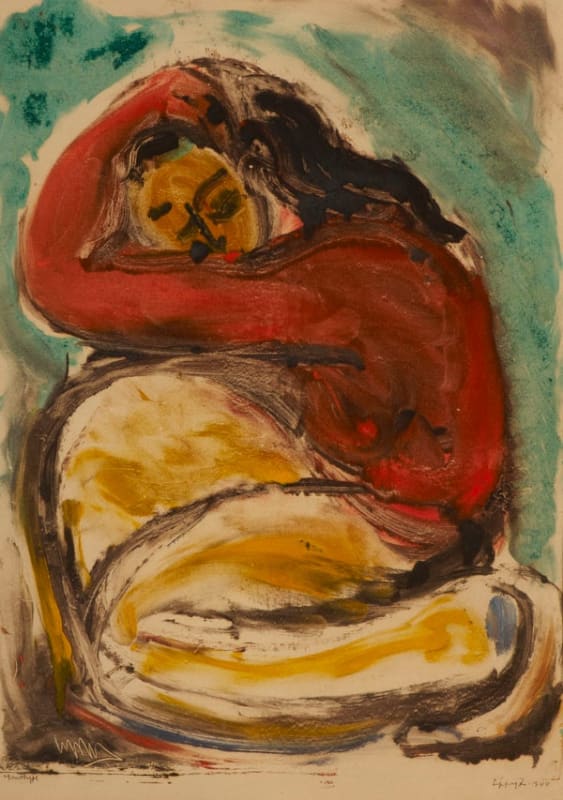Sculptor, printmaker, painter and teacher Lippy (né Israel-Isaac) Lipshitz was born into a Jewish family in Plungian, Lithuania on 8 May 1903 (his sister was the painter Ada Lipshitz-Wolpe and his daughter, Toni Lipshitz-Caspi, became a printmaker). The family moved to South Africa in 1908 and Lipshitz studied at the Cape Town School of Art (1922–25), under Percy Thatcher and Charles Groves, then Michaelis School of Fine Art (1925–26), under the sculptor Herbert Meyerowitz, initially, training as a woodcarver. Afterwards, he completed his studies in Paris at L’Académie del la Grande Chaumière (1928–32) under the sculptor Antoine Bourdelle. In 1929 he met Ossip Zadkine and Brancusi, at whose studio he was deeply inspired by African art, and several Jewish artists associated with the School of Paris including Soutine, Pascin, Kisling and Modigliani. After returning to South Africa, he held his first solo exhibition at Martin Melck House, Cape Town in 1932, also exhibiting at the Gainsborough Galleries, Johannesburg (1943–54) and holding his first retrospective at the Durban Art Gallery in 1944. He became a founder member of the New Group and the Art Club of South Africa, and closely associated with South African modernism.
Between 1947 and 1948 Lipshitz lived in London; he had a studio in Chelsea and participated in an exhibition at Gimpel Fils before moving to Hampstead and holding a solo exhibition at Galerie Apollinaire in Litchfield Street in April 1948, which included 25 of his carvings (and part of which toured to the Gainsborough Galleries, Johannesburg). He also exhibited at the A.I.A. Gallery, and at The Little Gallery, with fellow émigré Dolf Dieser. He met Henry Moore, visited Jacob Epstein in his studio, and travelled to Paris with Jankel Adler to meet Jean Arp. In 1948 his work was included in the Tate’s exhibition of South African Art and he also visited the artist's colony at Zennor in Cornwall, meeting Sven Berlin; and the Abbey Art Centre at 89 Park Road, New Barnet, established by the art dealer William Ohly of the Berkeley Galleries, London. In the same year, Lipshitz's sculpture 'The Rise of the Maccabi' was included in a selling 'Exhibition of Jewish Art', arranged by the Ben Uri Art Gallery at the North Western Reform Synagogue in London, priced 500 guineas, with a request for donations to aid its acquisition by the Friends of the Tel Aviv Museum; in 1955 Lipshitz was part of a Ben Uri exhibition featuring six émigré sculptors: 'Sculpture by Fredda Brilliant, Georg Ehrlich, Jacob Epstein, Lippy Lipshitz, Abraham Lozoff, Karel Vogel'. In 1977 his monotype 'Figure' was included in 'Selections from the Permanent Collection - watercolours, drawings and graphics'.
Lipshitz returned to South Africa in 1948, later becoming associate professor of fine art at Michaelis School (1963–68), although he spent a year working in Greece in 1966. In 1978 he immigrated to Israel. He contributed to many exhibitions internationally including a retrospective at the South African National Gallery, Cape Town in 1976. Lippy Lipshitz died in Kiryat Tivon, Israel on 25 October 1980. His work is held in many South African collections and, in the UK, a self-portrait (1948) is held by Tate.


